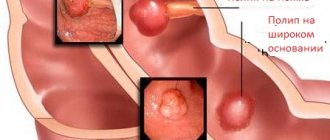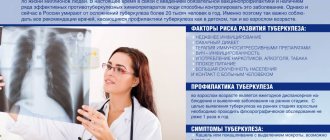Intussusception - symptoms and treatment
Treatment of intussusception involves disintussusception—the release of the strangulated intestine. According to Order of the Ministry of Health of the Russian Federation No. 203 “On approval of criteria for assessing the quality of medical care,” treatment of intussusception should be carried out no later than an hour after diagnosis.[7] The fact is that the pathological process in the wall of the strangulated intestine is very dangerous. Therefore, it is important to carry out disinvagination as early as possible and as quickly as possible.
There are two main principles for the treatment of intussusception: surgical (operative) and conservative.
In case of severe general condition of the child, it is necessary to carry out preoperative preparation:
- restore water and electrolyte balance;
- reduce hyperthermia;
- improve microcirculation;
- introduce antibacterial drugs as early as possible.
Conservative therapy
Treatment of intussusception for a long time was exclusively surgical, since the level of diagnosis was low. At the moment, in the absence of convincing data for peritonitis and necrosis of the strangulated intestine, conservative treatment is carried out using a special manipulation - air disinvagination.[8] This procedure is performed under general anesthesia and does not cause pain to the child. Its essence lies in inserting a special tube - a rectal probe with an air injection system connected to it and a pressure gauge (rectoscope with a Richardson balloon connected). Under a certain pressure, air is pumped into the intestines, and with the help of gas pressure, the invariant is straightened.
This method is considered the gold standard for conservative treatment of intussusception. Its effectiveness has been confirmed by many multicenter studies.[11][12][13][14][15]
There is also a method of hydrodisinvagination, based on the effect of hydrostatic pressure on the intussusception. It involves the use of an enema with the injection of a warm saline solution or a barium suspension under the control of an X-ray machine that conducts continuous filming.
It is worth noting that the method with a barium suspension, according to the authors, has one advantage: barium is a fairly dense and heavy substance, which can provide a better chance for conservative disinvagination. However, at present this suspension is not used, as it can lead to a serious complication: if a breakthrough of the intestinal wall occurs during disinvagination, the barium suspension will enter the abdominal cavity, from where it will be extremely difficult to remove it, which will give rise to the development of severe peritonitis.
Hydrodisvagination itself is indicated in the Federal Clinical Guidelines as an additional treatment method, but it is less preferred.[8]
Surgical treatment
Surgical treatment of intussusception is performed much less frequently. There are clearly defined indications for its implementation:
- the presence of peritonitis and a verified diagnosis of “Intussusception”;
- more than 24-48 hours from the onset of the disease;
- lack of effectiveness from three attempts at conservative disinvagination (pneumodesinvagination).
If the appropriate equipment is available and the surgeon is sufficiently qualified, intussusception is eliminated through laparoscopic access. If it is not possible to perform laparoscopic disinvagination, they resort to an open technique, which is inferior only in terms of postoperative rehabilitation.
The duration of rehabilitation is extremely individual and depends on many factors. It is generally accepted that after laparoscopic release of the strangulated intestine, rehabilitation is easier and faster due to reduced pain.
Definition of rectal prolapse
Rectal prolapse occurs as a result of a violation of its fixation with the walls of the pelvis when the pelvic floor muscles are weakened, which is approximately 9% of all diseases of the colon. Rectal prolapse (rectal prolapse) is a telescopic protrusion of the rectum through the anus; intussusception is a condition in which the telescopic displacement of the rectum does not extend beyond the anal canal. Both of these diseases lead to discomfort and minor pain (rarely) in the perineal area. Sometimes rectal prolapse is accompanied by ischemia and necrosis of the wall, which requires emergency surgery.
Recurrence of rectal prolapse
Although rectal prolapse has historically had a high recurrence rate (up to 50%), current data suggest that recurrence of rectal prolapse after rectopexy with sigmoid colon resection is less than 10%. In general, perineal surgery for rectal prolapse has a higher risk of recurrence than abdominal surgery.
Patients with recurrent rectal prolapse need examination - manometry and defecography . It is very important to inform the patient that even if the prolapse is corrected, there are still concomitant dysfunctions of the colon (constipation or diarrhea) that are not corrected by rectopexy. One of the most important points in choosing the best surgical option for correcting recurrent rectal prolapse is assessing the remaining blood flow after the first operation. The first operation performed for rectal prolapse plays a major role in determining the type of intervention to correct recurrent prolapse, since bowel resection interrupts the blood supply to the colon. Any patient who has undergone a primary resection of the rectum or sigmoid colon with anastomosis requires a very careful examination before undergoing a second operation, including a careful study of the protocol of the first operation.
The obvious risk of repeat resection is ischemia of the segment of colon between the two anastomoses. For example, if a patient first underwent a perineal rectosigmoidectomy, then a repeat perineal rectosigmoidectomy or transabdominal rectopexy may be performed. However, in such cases, transabdominal rectopexy with resection of the sigmoid colon should be excluded due to the risk of ischemia of the remaining rectal segment. For those patients who initially underwent transabdominal rectopexy but experienced a relapse, repeat transabdominal rectopexy is the procedure of choice. Recurrence of full-wall rectal prolapse can be successfully corrected with the same type of surgery that was performed initially.
Reports in the literature indicate a successful outcome of correction of recurrent rectal prolapse in 85-100% of cases. Unfortunately, while most authors justify the initial surgical technique, for repeat procedures they do not attempt to adequately justify the choice of type of operation. For these reasons, there appears to be insufficient data on which to make an intellectually informed treatment decision for the correction of recurrent rectal prolapse. There is no specific algorithm available for use in selecting the best surgery to treat recurrent rectal prolapse, except that most reports suggest that young patients should be treated with a transabdominal approach and older patients with a perineal approach.
A large retrospective study was conducted on 78 patients with recurrent rectal prolapse selected from a group of 685 patients who underwent primary correction of rectal prolapse. When studying recurrence after the second and sometimes even 3 operations, they showed that the approach (abdominal versus perineal) determines the frequency of recurrence of the disease. Abdominal surgery was associated with lower recurrence of rectal prolapse. The authors concluded that, if possible, the abdominal approach should be used to correct recurrent rectal prolapse.
Symptoms of rectal prolapse
Most patients with rectal prolapse come to the surgeon with complaints about the prolapse itself. They often describe the sensation of “something coming out,” especially during bowel movements (Figure 1). Many people complain of feeling like they are “sitting on a ball” until spontaneous or manual reduction pushes the prolapsed bowel back inside. Very often this disease is associated with soiling of underwear and the sensation of mucus secretion from the rectum. With prolapse, dysfunction of the colon often occurs, such as constipation and straining to defecate, as well as fecal incontinence. When colon function is impaired, damage to the mucous membrane (ulcers, erosions, etc.) often occurs.
Fig1. Prolapse of all rectal walls
List of published works on the topic “Rectal and genital prolapse”
“Minimally invasive colon surgery”, K. V. Puchkov, D. A. Khubezov
- Puchkov K.V., Karpov O.E., Filimonov V.B. Laparoscopic rectopexy // Ros. magazine gastroenterology, hepatology, coloproctology.-1997.-T. 7, No. 5 (add. 4). -P.248.
- Puchkov K., Filimonov V., Titov G., Chubezov D. Laparoscopic technology in coloproctology // Proktologia. – 2001. – Suppl. No. 1. – P. 97.
- Puchkov K.V., Khubezov D.A. Laparoscopic rectopexy // Problems of coloproctology. Vol. 18. - M., 2002. - P. 194-195.
- Puchkov K.V., Khubezov D.A., Yudina E.A.. Laparoscopic one-stage recto- and sacrovaginopexy // Current issues of coloproctology: abstract. report 1st Congress of Coloproctologists of Russia with international. participation / edited by G.I. Vorobyova, G.P. Kotelnikova, B.N. Zhukova.- Samara: State Enterprise <Perspective>: SamSMU, 2003. - P. 398-399.
- Puchkov K.V., Khubezov D.A., Politova A.K. Laparoscopic recto- and sacrovaginopexy in patients with a combination of rectal prolapse and uterine prolapse // Current problems of modern surgery: tr. congress, Moscow, February 22-25. 2003 – M., 2003. – P.36.
- Puchkov K.V., Khubezov D.A., Yudina E.A., Khubezov A.T., Podyablonsky A.V. Laparoscopic recto- and vaginosacropexy with one implant // Current problems of pelvic surgery. - M., 2003.- P. 79 –81.
- Puchkov K.V., Ivanov V.V., Bakov V.S., Usachev I.A. Optimization of techniques for surgical treatment of pelvic prolapse // Minimally invasive technologies in surgery: materials from interregion. scientific-practical conf. - Makhachkala: IPC DSMA, 2005. - P.159-160.
- Puchkov K.V., Khubezov D.A. Minimally invasive colon surgery: A guide for doctors. - M.: OJSC "Publishing House "Medicine", 2005. - 280 p.
- Puchkov K.V., Bakov V.S., Ivanov V.V. Simultaneous laparoscopic surgical interventions in surgery and gynecology: Monograph. - M.: ID MEDPRACTIKA - M. - 2005. - 168 p.
- Puchkov K.V., Ivanov V.V., Usachev I.A. The use of polypropylene implants with simultaneous prolapse of pelvic organs // 9th Moscow. international congr. in endoscopic surgery, Moscow, April 6-8. 2005: abstract. report / ed. Yu.I. Galingera. – M., 2005. – P.296-297.
- Puchkov KV, Ivanov VV, Barsukov VA, Filimonov VB Determining of safety of soldering of vessels in tissue mass of various types while using the technique of dosed ligating electrothermal influence of ligasure // Abstracts of The 10th World Congress of Endoscopic Surgery, 13 -16 September, 2006, Berlin. – P.288.
- Puchkov K.V., Chernousova N.M., Filimonov V.B., Vasin R.V., Andreeva Yu.E. Correction of genital prolapse and stress urinary incontinence in women using modern synthetic implants // Journal. obstetrics and women's diseases.-2007.-T. 57 (special issue). — P.204-206.
- Puchkov KV, Filimonov VB, Vasin RV Correction of pelvic floors prolapse and women under tension enuresis // Abstracts book of the 16th EAES Congress 2008 with the help of up-to-date implants, 11-14 July, 2008, Stockholm, Sweden. – P.208-209.
- Puchkov K.V., Filimonov V.B., Vasin R.V., Vasina I.V. Complications of using polypropylene implants for pelvic prolapse // Journal. obstetrics and women's diseases.-2009.-T. 58.(issue 5). — P.66-67.
- Puchkov K.V., Filimonov V.B., Vasin R.V., Vasina I.V. Diagnostic capabilities and value of ultrasonography and magnetic resonance imaging for pelvic prolapse // Journal. obstetrics and women's diseases.-2009.-T. 58. (issue 5). — P.67-68.
- Puchkov KV, Filimonov VB, Vasin RV, Vasin IV Polypropylene implants as the treatment decision for patients with pelvic prolapses, connective tissue displasia and stress incontinence // Abstracts book of the 17th EAES Congress 2009, 17-20 June, 2009, Prague , Czech Republic. – P.96.
- Puchkov KV, Podzolkova NM, Andreeva JE, Dobychina AV, Korennaya VV Polypropylene implants as the treatment decision for patients with pelvic prolapses // 21st ESGE Annual Congress (Paris, 11-14 September 2012) - P.88-89.
Etiology and pathogenesis of rectal prolapse (rectal prolapse).
Many theories of the occurrence of rectal prolapse have been described. About 100 years ago, Moschcowitz presented rectal prolapse as a sliding hernia through a defect in the pelvic fascia. Broden and Snellman later showed on cinedefecography that rectal prolapse is an intussusception of the rectum. Rectal prolapse is more common in women than men and is likely associated with childbirth. Prolonged straining during pushing, anatomical features (wide pelvis) are producing and predisposing factors in the occurrence of this disease. In women, the incidence of this disorder increases with age, while men are more often affected at a young age (20-40 years) and they almost always have a history of pre-existing rectal disease, such as anal atresia, or surgical treatment of diseases of the rectum and anal canal. In women, the pudendal nerves may be damaged during childbirth, leading to pelvic floor dysfunction such as urinary and fecal incontinence or genital or rectal prolapse.









